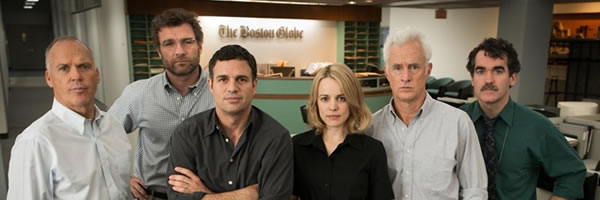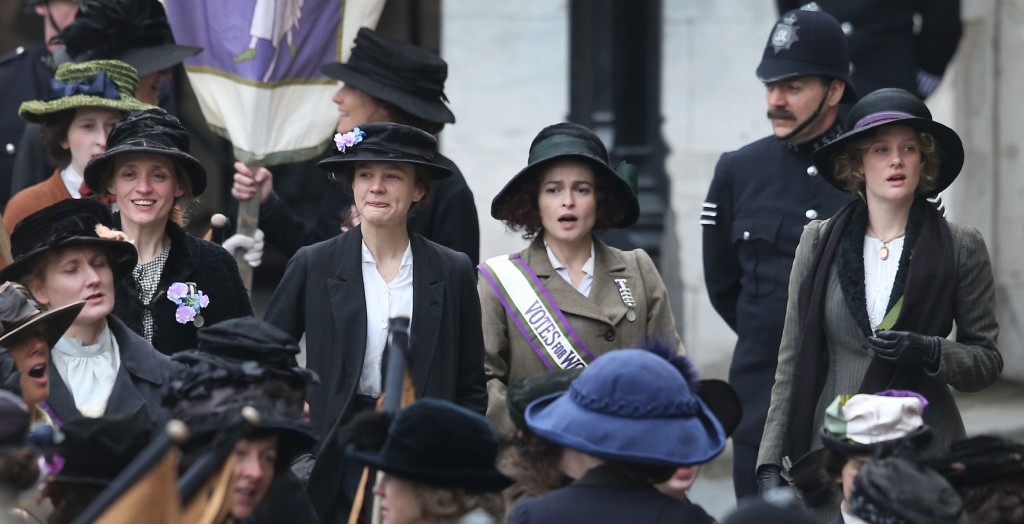This is a cast photo from the critically-acclaimed movie Spotlight. Look at this photo. Please identify the Hispanic. I’ll wait. Stop laughing. There’s actually a person of color in the photo. His name is Michael Rezendes, and he worked at the Boston Globe on the Spotlight team. If you haven’t seen the movie, can you figure out which one he is? Probably not. I’ll give you a hint. They gave the actor a bad haircut, and spray tanned him so he could play a Hispanic. Give up? It’s dark-skinned Mark Ruffalo!
Now look at this photo from Suffragette. Find the Indian princess involved in the movie. In fact, watch the whole movie and find the Indian princess. She’s not there. Sophia Duleep Singh led the Women’s Tax Resistance League and was a heavy hitter in the Women’s Social and Political Union, and she (as well as any other minority) was erased from the film Suffragette.
Both Spotlight and Suffragette are “mature” “sophisticated” movies about people and for people of a certain income, age, and racial makeup (read: upper-middle class older white [and/or Jewish] people), and they both have participated in the not-so-weird phenomenon of minority erasure. For anybody not following along, minority erasure happens when a dominant white culture takes a story with actual minority characters and diminishes them or erases them entirely from the story.
Last month, Ijeoma Oluo wrote an amazing non-review of Suffragette that sums up as, “why the hell should I write another review about white people when they refuse to acknowledge that people of color even exist?” In the non-review, she not only identifies the erasure of Mrs. Singh, but also of any people of color in the crowds. And, as she says, this happens time and time again…over and over and over.
Watching Spotlight, I noticed the same phenomenon. Even though Spotlight happens in 2002, there is exactly one brown face that gets one line in the whole entire movie…well, other than Spray Tanned Mark Ruffalo, if he counts. Apparently, there are hardly any black people who work at the Globe at all. Looking in cubicles, I saw 99% white faces. In an early board room meeting, you can see a black guy sitting next to Liev Schreiber in the establishing and coverage shots. But, as soon as you get into the room, every single shot seems to be constructed to edit him out of the scene. He never speaks, and is almost as decorative as a fancy lampshade.
Earlier this year, Stonewall had a similar problem, being about a real life event including many minority characters at the forefront of the event yet creating a non-existent character of a corn-fed middle-American white boy to be the central focus of the film. Hell, Stonewall took a fictional story written by a black man, and whitewashed it for the awards ceremony.
After an Oscar ceremony where we looked out onto a nomination list of white faces, Spotlight and Suffragette feel…*sigh*…unfortunately expected. Really, I don’t know why I expected better of the Hollywood filmmakers. And, I really don’t know why I expected better from the director of The Cobbler, one of the most racist and sexist movies to come out last year. Even The Cobbler had more minority actors than Spotlight does.
This alone doesn’t mean that Spotlight is a bad movie. The ham-fisted dialogue, dull-as-dishwater cinematography, sledgehammer-subtle score, and Stench of Smug Satisfaction about its own Importance means that it’s a bad movie. As Oluo says about Suffragette, “Not because Suffragette is a bad film—it’s not. It’s fine. It’s Oscar bait. Whatever.” The minority erasure is just terrible icing on the cake.
Hollywood, you can do better.



